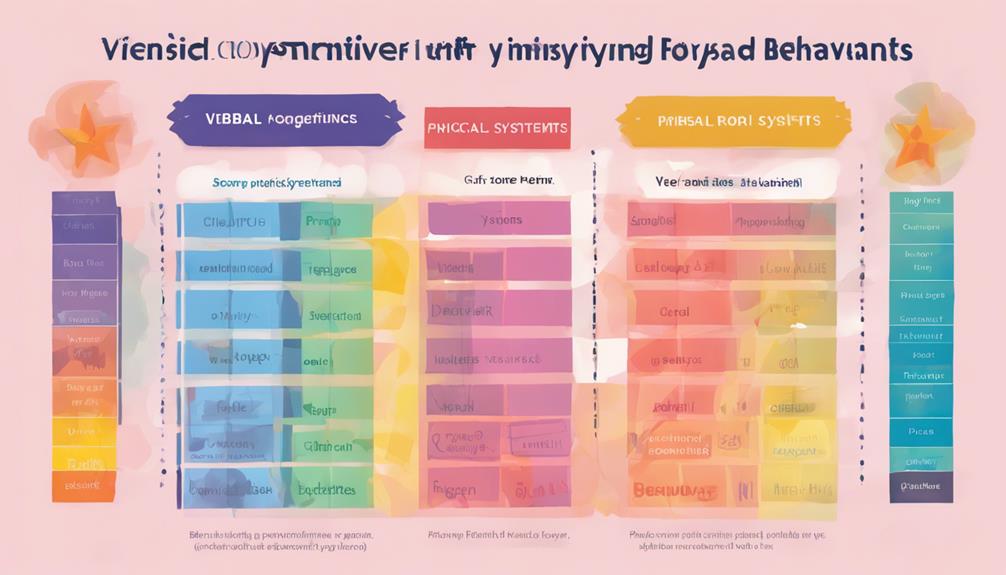To excel in sissy training with behavior charts, set clear goals—specific, achievable, and time-bound. Align rewards with goals for motivation. Track progress consistently to spot trends. Customize charts to suit individual strengths. Regularly check progress and adapt as needed. Celebrate even small successes with praise or gestures. Monthly feedback sessions encourage growth. Stay observant, adjusting strategies when required. Feel free to discover more strategies that could propel your sissy training to new heights.
Setting Clear Goals

Setting clear goals is pivotal in sissy training as it provides a roadmap for progress and achievement. When setting goals for sissy training, it's important to make them specific, measurable, achievable, relevant, and time-bound (SMART).
Start by defining what behaviors or tasks you want to improve or change. For instance, if you aim to enhance your femininity, a specific goal could be practicing voice feminization exercises for 15 minutes daily. Measure your progress by tracking how often you complete this task each week.
Tracking progress is crucial in sissy training as it allows you to see your development over time and make adjustments as needed. Consider using a behavior chart or journal to monitor your daily or weekly achievements. Celebrate small wins along the way to stay motivated and reinforce positive behaviors.
If you notice challenges or setbacks, reflect on what might be hindering your progress and adjust your goals accordingly. By setting clear goals and tracking your progress, you can effectively navigate your sissy training journey towards success.
Choosing Appropriate Rewards
When considering rewards for your sissy training progress, it's important to choose incentives that motivate and reinforce your desired behaviors effectively. Reward selection plays a pivotal role in shaping your behavior and encouraging positive changes.
To select appropriate rewards, consider options that are meaningful to you and align with your training goals. Incentive options could range from small treats like a favorite snack or a relaxing bath after a successful training session, to larger rewards such as a new outfit or a day off from certain tasks.
It's essential to tailor the rewards to your personal preferences and what drives you to excel in your sissy training. By choosing rewards that genuinely excite and motivate you, you're more likely to stay committed to your training program and achieve your desired outcomes.
Remember that rewards should be seen as a positive reinforcement for progress and should be given consistently to reinforce the desired behaviors effectively. Selecting appropriate rewards can enhance your motivation and make your sissy training journey more rewarding and fulfilling.
Consistent Tracking System

To effectively monitor and manage your progress in sissy training, establishing a consistent tracking system is crucial. Tracking accuracy is key in understanding your behavior patterns and identifying areas for improvement. By consistently recording your actions and responses, you can gain valuable insights into your journey towards sissy training goals.
Maintaining a detailed record of your behaviors allows you to track your progress over time accurately. By noting down specific actions, reactions, and emotions, you can identify patterns that may be hindering your development in sissy training.
This tracking system enables you to reflect on your performance objectively and make informed decisions on how to adjust your behavior to align with your training objectives.
Consistency is essential in ensuring the effectiveness of your tracking system. Make it a habit to record your behaviors regularly and review your progress consistently.
Tailoring Charts to Individual Needs
How can you tailor behavior charts to meet your individual needs effectively during sissy training? A personalized approach is key to achieving success.
Consider customizing goals and incentives to align with your specific journey. Start by identifying your unique strengths and areas for growth.
Tailor your behavior chart to focus on aspects that are most relevant to your individual progress. For example, if you excel in completing tasks promptly but struggle with consistency, set customized goals that emphasize maintaining a routine.
Reward yourself with specific incentives that motivate you personally, such as a new sissy outfit or a special pampering session.
Monitoring Progress Regularly
Regularly monitoring your progress is essential for staying on track and making meaningful strides in your sissy training journey. Implementing weekly check-ins can help you reflect on your behaviors and identify areas for improvement. These frequent evaluations allow you to track your growth over time, making it easier to adjust your training strategies accordingly.
Additionally, setting monthly evaluations as milestones can provide a more detailed view of your progress. Creating progress reports can be a valuable tool in this process. By documenting your achievements and challenges, you can gain a deeper understanding of your development. Setting specific goals based on these reports can keep you motivated and focused on your sissy training objectives.
Implementing Positive Reinforcement
Implementing positive reinforcement techniques can be highly effective in shaping desired behaviors during sissy training. When utilizing role-playing scenarios, you can create safe spaces for sissies to practice new behaviors and receive positive feedback.
Engaging in these scenarios allows sissies to visualize themselves in different situations, reinforcing the desired behaviors through practice and repetition.
Communication techniques play a pivotal role in implementing positive reinforcement. Providing clear and specific feedback about the behaviors you wish to reinforce is essential. Acknowledge even the smallest steps towards progress to encourage sissies to continue exhibiting those behaviors.
Effective communication fosters a supportive environment where sissies feel motivated to work for improvement.
Addressing Setbacks Effectively

When setbacks occur in sissy training, it's pivotal to approach them with a proactive and adaptable mindset to effectively address challenges and continue progress. Overcoming obstacles is a vital part of the journey, and staying motivated during these times can make all the difference.
Remember, setbacks aren't a sign of failure but opportunities for growth and learning. Handling setbacks involves building resilience. Take a step back to analyze the situation objectively. Identify the root cause of the setback and brainstorm potential solutions.
Adjust your behavior chart if needed to better suit your goals and capabilities. Seek support from your trainer or a support group to gain fresh perspectives and insights. Remember, setbacks are temporary, and with determination and the right strategies, you can bounce back stronger than before.
Stay focused on your long-term objectives and celebrate small victories along the way. By approaching setbacks with a positive attitude and a willingness to adapt, you can turn challenges into stepping stones towards success in sissy training.
Involving Sissy in Chart Creation
To enhance sissy training effectiveness, consider involving the sissy in the creation of behavior charts. Collaborative planning can be a powerful tool in fostering a sense of ownership and commitment to the training process. When sissies actively participate in designing their behavior charts, they're more likely to feel motivated and engaged in achieving their goals.
Encourage creativity when working together on the charts. Allow the sissy to choose the colors, stickers, or symbols that represent different milestones or tasks. This personal touch can make the process more enjoyable and personalized.
Additionally, providing creative incentives, such as special rewards for reaching certain achievements, can further incentivize the sissy to actively participate in chart creation and follow through on the set goals.
Celebrating Achievements Together

Consider incorporating celebratory rituals into your sissy training routine to acknowledge and reinforce achievements together. Implement weekly check-ins to review progress and provide immediate rewards for meeting goals. These regular check-ins can help keep motivation high and foster a sense of accomplishment.
In addition to weekly check-ins, set aside time for monthly progress evaluations. During these monthly reviews, celebrate the achievements made over the past month. This can be a special moment where you and your sissy reflect on the milestones reached and the growth experienced.
Rewarding achievements, whether big or small, is pivotal in sissy training. It not only reinforces positive behaviors but also encourages continued progress. Find ways to celebrate together, whether it's through verbal praise, small gifts, or other meaningful gestures.
Adjusting Strategies as Needed
Adjust your sissy training tactics as needed to ensure continued progress and effectiveness in achieving your goals. Flexibility in approach is key to successful behavior chart implementation. Keep an open mind and be willing to adapt methods based on the individual progress and needs of the sissy undergoing training.
Customizing techniques to suit the specific behaviors and personalities of each sissy can greatly enhance the effectiveness of the behavior charts. Remember, what works for one may not work for another, so tailoring plans is essential for long-term success.
Regularly assess the effectiveness of your current strategies and be proactive in making adjustments when necessary. If a particular approach isn't yielding the desired results, don't hesitate to switch things up. Stay observant and responsive to the sissy's reactions and progress to ensure that the behavior charts remain a valuable tool in promoting positive change.
Frequently Asked Questions
How Can I Ensure My Sissy Training Behavior Chart Is Discreet?
To guarantee your sissy training behavior chart is discreet, consider using a digital platform with password protection or a hidden physical location. Privacy concerns can be addressed by maintaining confidentiality and utilizing subtle, inconspicuous tracking methods.
Should I Include Punishments on the Behavior Chart?
Including punishments on the behavior chart may be necessary for accountability. However, focusing on positive reinforcement, consistency, and clear communication is key. Get creative with incentives to motivate progress and maintain a supportive environment for effective sissy training.
Can Behavior Charts Be Effective for Older Sissies?
Behavior charts can benefit older sissies by providing structure and motivation. Challenges may arise due to perceived immaturity. Explore effectiveness by tailoring charts to individual needs. Consider alternatives like positive reinforcement for sustained progress.
What if My Sissy Refuses to Participate in the Chart?
If your sissy refuses to participate in the chart, try motivating techniques like rewards or privileges. Clearly communicate the importance and benefits of the chart. Understand their perspective and address any concerns. Consistent consequences for non-participation can also be effective.
Is It Necessary to Involve a Professional in Sissy Training?
You don't always need a professional for sissy training. DIY sissy training can be effective with online resources. Research, plan, and experiment to find what works best. Professionals can offer guidance, but it's not essential.
Conclusion
To wrap up, using behavior charts in sissy training can be a powerful tool for achieving desired outcomes. By setting clear goals, choosing appropriate rewards, and consistently tracking progress, you can help your sissy reach their full potential.
Remember to tailor the charts to their individual needs, monitor progress regularly, and celebrate achievements together. Address setbacks effectively and be willing to adjust strategies as needed.
With dedication and patience, you can help your sissy thrive in their training journey.






























